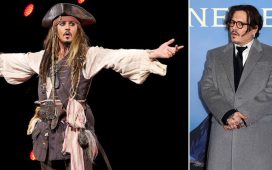If the low-budget indie horror Midsommar is to be believed, the prescribed medication for the traumatised American is a trip to quaint old Sweden. Even if its a murder-suicide involving your entire family, a mini-break to the European countryside is sure to sort it out. Unless, that is, you accidentally stumble on a hotbed of mythological creatures and beliefs. Then, I’m afraid, you’re screwed.
It seems horror directors are getting a taste for Norse mythology. Fantastic beasts and pagan villages buried deep in the forest are being trotted out to wreak havoc on unwitting Americans trying to absolve themselves of past sins. While Sweden’s extensive history of folklore is a rich field to plunder, Midsommar’s mythological horror gives rise to more confusion than fright.

In Midsommar, a young woman, Dani, has her life turned upside down when her parents and sister die in a tragic murder-suicide. When her boyfriend, Christian, and a group of lads go to Sweden to celebrate a midsummer festival, she tags along. In the deceptively warm embrace of an isolated commune, the group bear witness to horrific rituals and are slowly picked off one by one.
But it doesn’t really work. Dani’s battle with the spectre of grief and self-doubt takes centre stage, but writer-director Ari Aster chooses to leapfrog Dani towards self-actualisation via stilted, unexplained interactions with ritual. Thanks to the power of paganism, Dani comes out the other side a stronger, more resilient, more hardened woman. Even if the story is entwined with cleverly researched mythology, the shallow exploration of character arcs and gratuitous violence wrapped in the guise of tradition leave us questioning why the hell we are here.

Go back to 2017 and you’ll find that David Bruckner’s film The Ritual, based on a book of the same name, recounts an uncannily similar tale. Five old friends from university embark on a hiking trip to Sweden to commemorate the death of Rob, their friend who was beaten to death, while Luke, our unhappy protagonist, helplessly looked on. In an unexpected turn of events, the group stray into a forest where things begin to go wrong, and it’s revealed that the forest dwellers worship a God-like monster living in the woods.
As far as monsters go, The Ritual puts forward an impressive contender. Based on a jötunn and the bastard child of Loki, the monster is grotesque and frightening. The slow reveal over the course of the film adds to the suspense, so that when the creature finally shows itself looking as weird as expected, it doesn’t disappoint. And rather than being a wholly derivative plot device, the monster and the folklore behind it work to advance the sense of dread as the narrative moves forward.
Where the monster makes impact in this film, other areas are lacking. The script is littered with so much swearing it feels as if the writers ran out of adjectives . We learn little about the characters, and, while the jötunn is scary as hell, it isn’t scary enough to obscure the plot flaws.
Mythology provides a plethora of opportunities to make well-crafted art-house horror; take a look at The Witch as a prime example. In Midsommar and The Ritual, though, film-makers seem to be piggybacking on style to cover for a lack of substance. The main characters and the dialogue play as much a part in anchoring the film as the monsters do. Exploiting mythologies for cheap scares is not enough.














